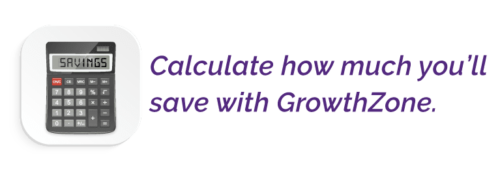Guest Blog by Kyle Sexton
Somewhere in the history of your chamber or association, sponsorship began to look and smell like advertising.
Sponsors logos and banners aren’t advertising. Or at least, they aren’t only advertising.
Advertising is mass. Targeted, sure, but scaled. And advertising is sold like other scaled commodities.
Consider the difference between your marketing plan and the “game” played by mass media. They focus on mostly inflated audience numbers to exaggerate the perceived value to the advertiser. Digital is winning against broadcast advertising because pay-per-click advertising leaves a signature trail that can’t be inflated or exaggerated.
I don’t know about you, but I only like playing games I can win.
If you sell “advertising” in place of sponsorships, prospective advertisers will likely compare your options to every other advertising option, and you will probably lose the game.
So how can you win? Focus on who, not how many.
Many advertising salespeople emphasize their numbers because a large audience size allows them to “win.” For example, what do local broadcasters often fail to share with their advertisers? That their mass audience also includes (relies on?) retirees and the unemployed. What do print magazines forget to explain? The number of complimentary copies (i.e., sent to people who will never read them).
When explaining your offerings, it’s imperative for prospective sponsors/advertisers to understand that your smaller audience actually offers more value. Back to our example, broadcast and magazine advertisers often waste money on a broad audience that has no use for their product or service. Your audience is targeted, and their product/service is relevant to them.
Chamber and association audiences are, in nearly every instance, built around employed professionals and business owners. When taking a closer look at their median incomes from an advertising perspective, it’s easy to see they likely have greater spending power.
-
-
- United States average: $31,133 (2019, US Census Bureau)
- Self-employed: $34,751 (Gallup)
- Employees of businesses 5-19 employees: $35,801 (Forbes)
- Employees of businesses 50-99 employees: $41,782 (Forbes)
- Business owners: $66,373, not including profits/dividends (Payscale)
- Professional services: $80,990 (senior accountants, Salary.com)
-
Other media is dependent on large audience size because otherwise, they lose the game. When your organization offers an audience to a potential sponsor that only includes:
-
-
- Employed persons
- Business owners
- Firm partners
-
And doesn’t include:
-
-
- Unemployed persons
- Retirees
- Students
-
You not only play the game; you’ve vastly increased the odds of winning it.
Further moving value away from just advertising, there are four main drivers of sponsor value:
-
- Exclusivity
- Scarcity
- Position
- Perception
When you get the right mix of these value drivers and pair it with either a good salesperson or a great sales process, you can drive even more revenue for sponsorship than advertising alone.
Kyle Sexton is the founder of ChamberThink Strategies and publisher of Chamber Today, done-for-you content for chambers and economic development organizations.
Since 2011, Growthzone has partnered with Kyle to help Chambers and Associations grow. He was named by Chamber Executive magazine as one of the most influential innovators in the Chamber industry. His clients drive more member value by publishing useful, helpful business content and offering choices in investment levels and scale-able business services.
You can learn his approach for free at MembershipTiers.com or enroll your team in a month of daily video tips at ChamberDaily.com.











